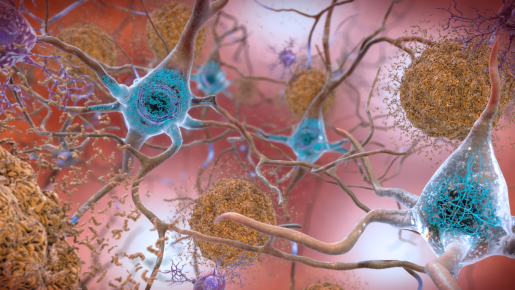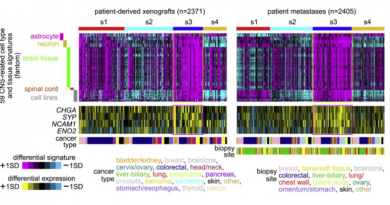Ataxin-1: One gene, two different neurodegenerative diseases
Certain variants of the ataxin-1 gene cause a rare neurodegenerative disease called spinocerebellar ataxia type 1 (SCA1). Years ago, the lab of Dr. Huda Zoghbi together with the lab of Dr. Harry Orr at University of Minnesota discovered that mutations that repeat a region of the gene lead to SCA1, a condition in which the cerebellum wastes away, typically leading to progressive deterioration of motor coordination and balance, and difficulties with swallowing and breathing.
Years after the original work connecting the ataxin-1 gene with SCA1, another collaboration has uncovered that ataxin-1 also is linked to a more common neurodegenerative condition, Alzheimer’s disease.


“In this study we collaborated with the laboratory of Dr. Rudolph E. Tanzi, professor and director of the Genetics and Aging Research Unit at Massachusetts General Hospital (MGH), and the laboratory of Dr. Jaehong Suh, assistant professor of neurology at Harvard Medical School and assistant neuroscientist at MGH. Their previous family-based genome-wide association study (GWAS) had shown that variants of the ataxin-1 gene might be risk factors for Alzheimer’s disease,” said co-corresponding author Zoghbi, professor of molecular and human genetics and of pediatrics and neuroscience at Baylor and director of the Jan and Dan Duncan Neurological Research Institute at Texas Children’s Hospital.


In addition, Suh, Tanzi and their colleagues had examined the effect of knocking out the ataxin-1 gene in mice and found that the animals had learning deficits suggestive of a potential role of ataxin-1 in learning and memory, which are typically affected in Alzheimer’s disease.
“We wanted to further investigate the connection between ataxin-1 gene and Alzheimer’s disease, so we approached the Zoghbi lab, where the ataxin-1 gene was discovered and has been extensively studied for more than 20 years in the context of SCA1,” said Suh, who is first and co-corresponding author of this work.
One gene, two neurodegenerative conditions
In this study, the researchers observed that knocking out the ataxin-1 gene had a different set of consequences. First, the effects were not focused on the cerebellum, but on the hippocampal region of the cerebrum, where they found evidence of increased generation of amyloid beta peptides and disruption of both neuronal connectivity and neurogenesis, which may explain the early observations of problems with learning and memory.
“We also investigated the molecular mechanism involved and identified alterations in a molecular cascade, including an increase in the BACE1 enzyme that plays a key role in the formation of amyloid beta peptide, the main constituent of amyloid beta plaques that accumulate in the brains of Alzheimer’s disease patients,” Suh said. “BACE1 also is important in other neural functions.”
The group’s findings not only improve the understanding of this complex condition but suggest new therapeutic approaches.
“With our discovery that ataxin-1 is genetically and functionally associated with the risk for amyloid plaque formation, we have revealed an entirely new therapeutic avenue for preventing Alzheimer’s disease,” said Tanzi, co-corresponding author of the study.
“These findings were possible thanks to the generous support of funding institutions and foundations, such as The JBP Foundation that also provides opportunities for nurturing collaborations such as this one,” said Zoghbi, who also is an investigator at the Howard Hughes Medical Institute.
Interested in reading all the details of this work? Find them in the journal Cell.
Other contributors to this work include Donna M. Romano, Larissa Nitschke, Scott P. Herrick, Britt A. DiMarzio, Volodymyr Dzhala, Jun-Seok Bae, Mary K. Oram, Yuejiao Zheng, Basavaraj Hooli, Kristina Mullin, Vincenzo A. Gennarino, Wilma Wasco, Jeremy D. Schmahmann and Mark W. Albers. The authors are affiliated with one or more of the following institutions: Baylor College of Medicine, Massachusetts General Hospital and the Texas Children’s Hospital.
Financial support for this study was provided by NIH grants R01 AG056775, R01 MH060009, R37 NS027699 and U54 HD083092; the Cure Alzheimer’s Fund; the MINDlink Foundation; and The JBP Foundation.



